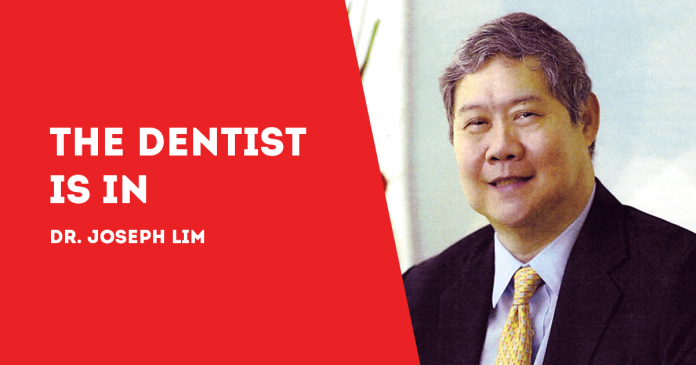
(By Dr. Joseph D. Lim and Dr. Kenneth Lester Lim, BS-MMG, DDM, MSc-OI)
THE PHILIPPINES is beset by a triple burden of malnutrition.
These are undernutrition (stunting and wasting), micronutrient deficiencies, and obesity.
Overweight children are more likely to stay obese into adulthood and to develop noncommunicable diseases like diabetes and cardiovascular diseases at a younger age, according to the World Health Organization.
The Expanded National Nutrition Survey conducted by the Food and Nutrition Research Institute in 2019 showed that among Filipino adolescents, obesity has tripled in the last 15 years.
Now comes a study showing that chronic inflammation caused by obesity may trigger the development of cells that break down bone tissue as well as the bone that holds teeth in place, according to research conducted at the University at Buffalo.
The study, published in the Journal of Dental Research, looked at how to better understand the association between gum disease and obesity. Completed in an animal model, it found that excessive inflammation resulting from obesity raises the number of myeloid-derived suppressor cells (MDSC).
MDSC is a group of immune cells that increase during illness to regulate immune function. MDSCs, which originate in the bone marrow, develop into a range of different cell types, including osteoclasts (a cell that breaks down bone tissue).
Bone loss is a major symptom of gum disease and may ultimately lead to tooth loss.
Also known as periodontal disease, gum disease affects more than 47 percent of American adults 30 years and older, according to the US Centers for Disease Control and Prevention.
“Although there is a clear relationship between the degree of obesity and periodontal disease, the mechanisms that underpin the links between these conditions were not completely understood,” says Dr. Keith Kirkwood, a dentist and a Professor of Oral Biology at the University at Buffalo School of Dental Medicine.
The research promotes the concept that MDSC expansion during obesity to become osteoclasts during gum disease is tied to increased alveolar bone destruction, says Kyuhwan Kwack, PhD, a Postdoctoral Associate in the university’s Department of Oral Biology.
“Taken together, this data support the view that obesity raises the risk of periodontal bone loss,” he says.
The study examined two groups of mice fed vastly different diets over the course of 16 weeks: one group a low-fat diet that derived 10 percent of energy from fat, the other group a high-fat diet that drew 45 percent of energy from fat.
It found that the high-fat diet group experienced obesity, more inflammation and a greater increase of MDSCs in the bone marrow and spleen compared to the low-fat diet group.
The high-fat diet group also developed a significantly larger number of osteoclasts and lost more alveolar bone (the bone that holds teeth in place).
The expression of 27 genes tied to osteoclast formation were significantly elevated in the group fed a high-fat diet.
The findings may shed more light on the mechanisms behind other chronic inflammatory, bone-related diseases that develop concurrently with obesity, such as arthritis and osteoporosis, says Dr. Kirkwood.
***
Dr. Joseph D. Lim is the former Associate Dean of the College of Dentistry, University of the East; former Dean, College of Dentistry, National University; Past President and Honorary Fellow of the Asian Oral Implant Academy; Honorary Fellow of the Japan College of Oral Implantologists; and Honorary Life Member of the Thai Association of Dental Implantology. For questions on dental health, e-mail jdlim2008@gmail.com or text 0917-8591515.
***
Dr. Kenneth Lester Lim, BS-MMG, DDM, MSc-OI, graduated Doctor of Dental Medicine, University of the Philippines College of Dentistry, Manila, 2011; Bachelor of Science in Marketing Management, De la Salle University, Manila, 2002; and Master of Science (MSc.) in Oral Implantology, Goethe University, Frankfurt, Germany, 2019. He is an Associate professor; Fellow, International Congress of Oral Implantologists; Member, American Academy of Implant Dentistry and Philippine College of Oral Implantologists. For questions on dental health, e-mail limdentalcenter@gmail.com/PN





